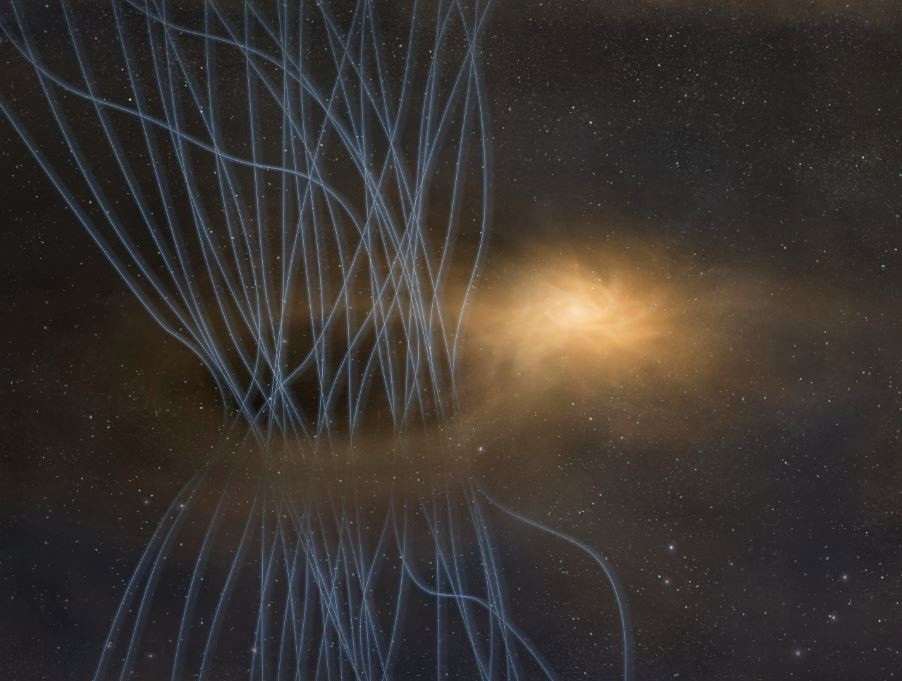Using the ALMA radio telescope in Chile, astronomers have discovered how the protostellar disk surrounding a newborn star discharges plumes of dust, gas, and magnetic energy.
These “sneezes,” as researchers from Kyushu University describe them, trigger a magnetic flux within the protostellar disk and may be a vital part of the star formation process. Their findings were published in the Astrophysical Journal.
All stars, including our Sun, develop so-called stellar nurseries, which are large concentrations of gas and dust that eventually condense to form a stellar nucleus, a young star. During this process, gas and dust form a ring around the young star called the protostellar disk.
“Magnetic fields permanently penetrate these structures, carrying with them magnetic flux. However, if all this magnetic flux were maintained as the star evolved, it would generate magnetic fields many times stronger than those observed in any known protostar,” he explains. Kazuki Tokuda of Kyushu University College of Science and first author of the study.
For this reason, the researchers hypothesized that there is a mechanism during stellar evolution that would eliminate this magnetic flux. The prevailing view was that the magnetic field gradually weakened over time as the cloud was drawn toward the core of the star.
To get to the bottom of this mysterious phenomenon, the team set their sights on MC 27, a stellar nursery located about 450 light-years from Earth. The observations were collected using the ALMA array, an array of 66 high-resolution radio telescopes built 5,000 meters above sea level in northern Chile.
“As we were analyzing our data, we found something completely unexpected. There were these fork-like structures that extended out to a few astronomical units of the protostellar disk. When we dug deeper, we discovered that these were spikes of ejected magnetic flux, dust, and dirt.” Benzene ” Tokuda continues.
“This is a phenomenon called 'exchange instabilities' where instabilities in the magnetic field interact with the densities of different gases in the stellar disk, expelling the magnetic flux. We call this the 'sneezing' of the young star.”
In addition, other peaks have been observed several thousand astronomical units away from the protostellar disk. The team hypothesized that these were signs of other “sneezes” in the past.
The team hopes that their findings will improve our understanding of the complex processes that shape the universe and continue to attract the interest of both the astronomical community and the public.
“Fork-like structures have been observed in other young stars, and this is becoming an increasingly popular astronomical discovery,” Tokuda concludes. “By investigating the conditions that lead to these 'sneezes' we hope to expand our understanding of how stars and planets form.”

“Beer enthusiast. Subtly charming alcohol junkie. Wannabe internet buff. Typical pop culture lover.”



:quality(85)/cloudfront-us-east-1.images.arcpublishing.com/infobae/MKYXZKOXMFALPMPONCZCOUAWEE.jpg)



More Stories
It's perfect for 1080p gaming with DLSS 3
This is how Your Timeline works in Google Maps
This tablet is on sale and has rarely been so cheap